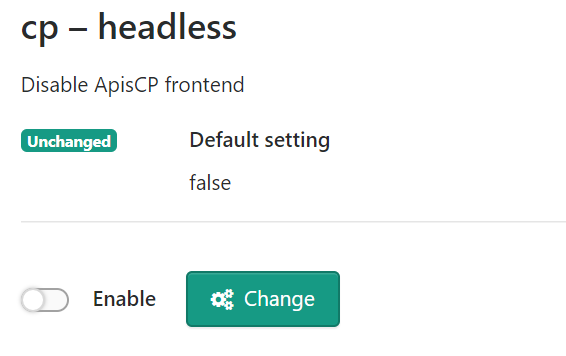
Become a pro in no time
Scopes eliminate convoluted documentation or worse yet – unsafe documentation –
with simple, guided management. Want to change your SSH port?
cpcmd scope:set system.sshd-port 54 or easier yet, use the GUI.
What about disabling the panel frontend to decrease exposed surface and improve security?
cpcmd scope:set cp.headless true or easier yet, use the GUI.
Enable remote connections? There's a Scope for that! cpcmd scope:set mysql.remote-access true,
or easier yet... you guessed it!
Protip There's even a Scope to set SMTP smart host.
Powered by Bootstrapper
Scopes are vetted by ApisCP, checking for potential configuration conflicts such as incorrect type, authentication, port availability, and coherence. Once it receives the go-ahead, it's woven back into Bootstrapper's logic. Scopes acknowledge consistency checks, automatically correcting configuration when a deviation is discovered.

Scope anatomy
Take cp.headless as a simple example. When enabled the following operations happen in
a single transaction:
-
Asserts input is boolean
Updates panel configuration, marking headless = true
Restarts ApisCP
Applies firewall rules removing access to 2083 and 2082
- 2078 is also deauthorized if DAV support was enabled


Scopes aren't just a game changer, but a necessary evolution in server management.